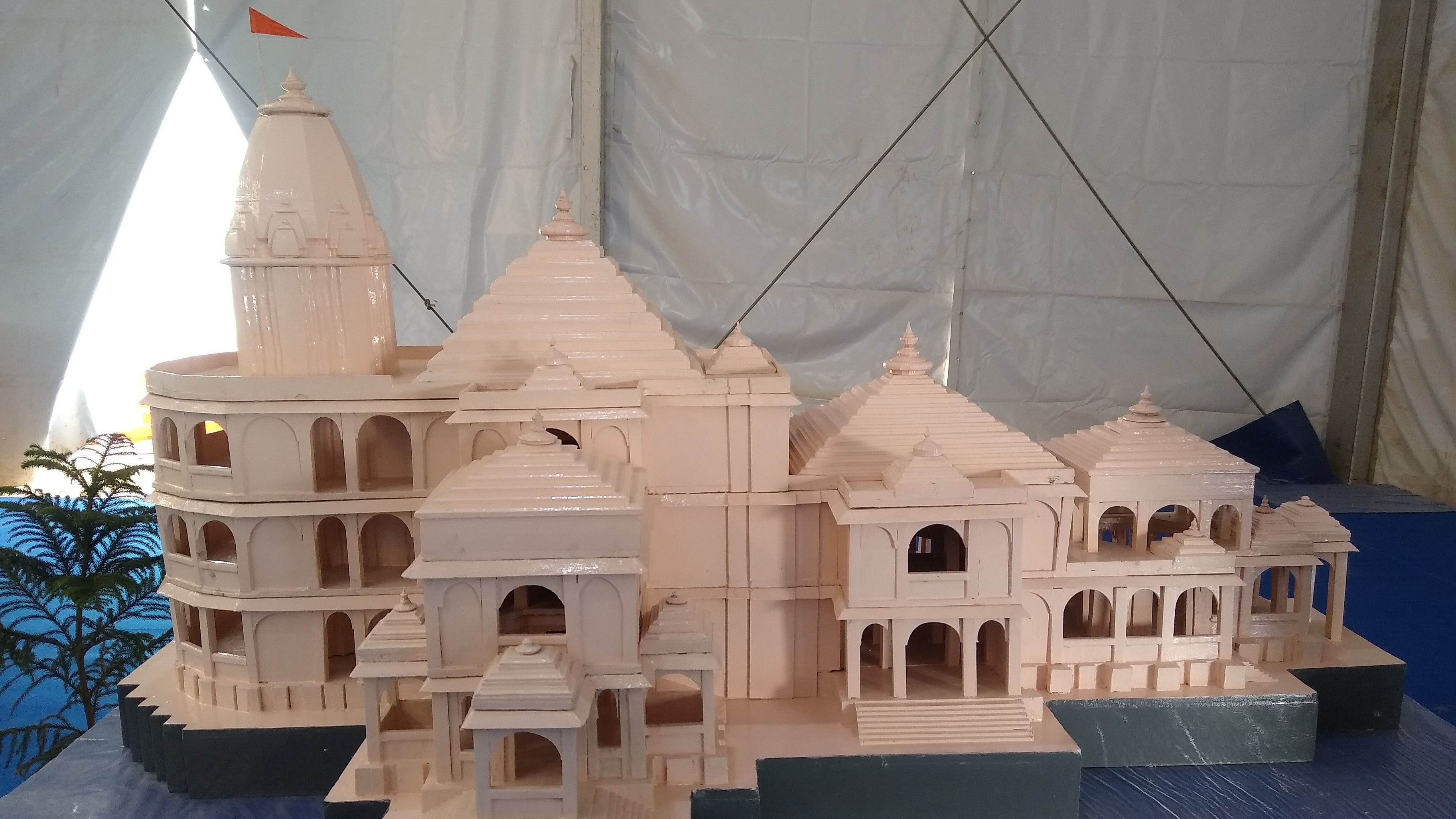
Ram Temple models at CSIR pavilion.
Credit: DH Photo/Kalyan Ray
Faridabad: A scaled-down model of the Ram Temple sits pretty in the CSIR exhibition pavilion at the Indian International Science Festival here with the council proudly claiming credits on the R&D work that it had conducted on the temple including the Surya Tilak that would occur every year on the day of Ram Navami.
The Central Building Research Institute, Roorkee, one of the oldest CSIR laboratories, has developed an opto-mechanical system using mirrors and pipes to help guide the sun rays to fall on the forehead of the deity on the Ram Navami – a day to commemorate the birth of Lord Rama.
“The sun rays will stay on the deity’s forehead for six minutes. This will happen every year. The astronomical calculations required for making the mechanical system were carried out by the Indian Institute of Astrophysics, Bengaluru,” a CBRI scientist told DH.
The institute was also associated with geophysical studies such as testing of the underground soil samples up to 12 mt, evaluating the strength of the retaining wall, validating the design of the temple and monitoring its health.
The Surya Tilak project had courted controversy in the past with Trinamool Congress's Mahua Moita flagging it on social media in November 2021. The CSIR officials, however, defended the project arguing the scientific calculations that went into making the system.
Notwithstanding the row, the scaled down version of the Ram Temple has turned out to be one of the key attractions at the four-day science festival headlined by RSS-backed Vijnana Bharati.
Nearly 45 directors of national laboratories are attending the event, which is being funded by various government scientific departments.
While the India International Science Festival had a low-key start in 2015, over the last two years it saw a major scale up – there are 17 parallel sessions this year - with substantial funding support from the government.
Sources in the Union Science Ministry said the festival had a budget between Rs 20-25 crore, contributed by various scientific departments.
In contrast, the Indian Science Congress Association used to receive Rs 5 crore from the Department of Science and Technology for organising the annual session of the Indian Science Congress between January 3-5 every year. But the DST has pulled out from this year’s science congress.
Meanwhile, CSIR director general N Kalaiselvi said the council would be having a tableau at the Republic Day parade depicting India’s success in lavender cultivation and extracting commercial benefits for the farmers.
